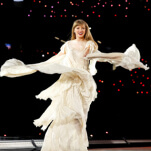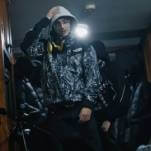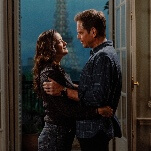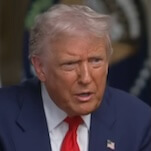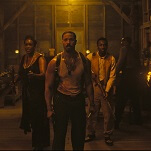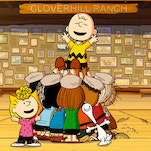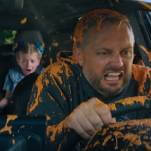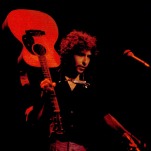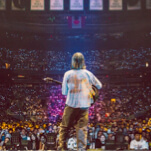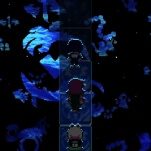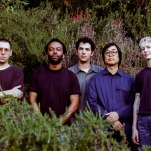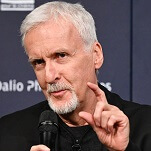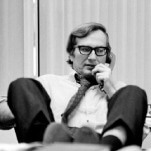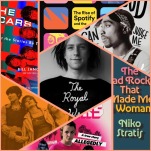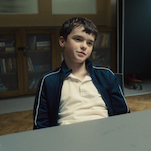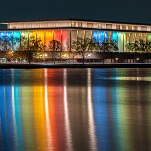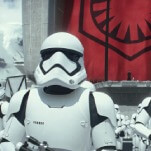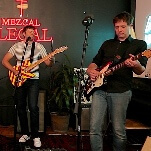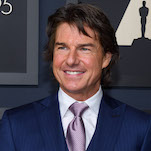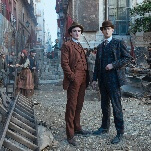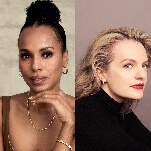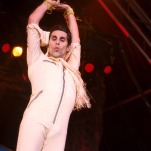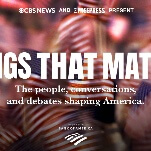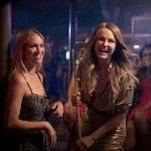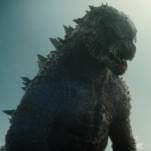The Life Of Muhammad is overly long and didactic, but it’s otherwise a useful primer on Muhammad’s life, if that’s something you’re looking to learn more about. The documentary—which is making its American debut tonight after is originally airing on BBC—is a full three hours long, separated into three parts named “The Seeker,” “Holy Wars,” and “Holy Peace.”
It’s educational, but The Life Of Muhammad isn’t purely about historical fact. It seems to exist largely to respond to implied questions about what Islam truly teaches or signifies—questions that cluster around problematic, divisive ideas like “jihad” and “modesty for women.” It’s hardly surprising that the bald truth of the Qu’ran does not condone terrorism, but this is a question that journalist Rageh Omaar feels is necessary to tackle, and he does so through exhaustive exploration of myriad different interpretations of the facts of the prophet’s life.
In most respects it’s easier to listen to this program as a podcast; the visuals aren’t bad, but they’re not particularly illuminating or helpful. Of all the footage, the B-roll of Hajj pilgrims is the most mesmerizing—thousands of worshippers in white, walking and genuflecting in unison. Omaar himself joins the worshippers, though this is incidental to the documentary. Otherwise the visuals are painfully underfunded and even a little hamfisted—slow-motion takes of Omaar perusing leatherbound books in a library to ostensibly “research” the history of Muhammad, for example. As Muhammad can’t be portrayed visually, the filmmakers are forced to use modern-day shots of Saudi Arabia, Jordan, Syria, and other locations. It’s not that it looks bad, but it’s hardly pertinent to the history at hand.
Overall, The Life Of Muhammad is earnest, but in its effort to be evenhanded about Islam it begins to grate as trying a bit too hard. It also feels out of the promised scope of the documentary. Muhammad’s life is backgrounded in favor of larger questions about Islam starting in the middle of the second hour and continuing up to the last ten minutes. What sounds like a romp through history in the endlessly fascinating Arabian peninsula morphs into a lecture on how Muslims are misunderstood. The latter is interesting, but the former is what’s promised, so that is ultimately a discouraging prospect.
What’s most interesting are the brass tacks of Muhammad’s life, related through one-on-one interviews with professors, writers, and even a princess of Jordan. The details of his life story, an inherently colorful one, are augmented by the many different interpretations of the same facts. Muhammad spent his infancy being raised by Bedouins in the desert and became an orphan at 6; at 25, he married Khadija, a woman 15 years older than him. It’s uncommon now, and it was basically unheard of then. After decades of marriage to her, Muhammad withdrew from society, meditating on the questions of the world. He had a revelation in a cave close to his hometown of Mecca. The revelation, and his subsequent revelations, which continued until his death, took the form of the Qu’ran (“The Recitation,” literally).
Over the course of his life he was ousted from Mecca and took over a nearby oasis, populating it with his followers and renaming it Medina. In his quest to create a better society he ruffled a lot of feathers. He controversially had around 800 Jewish tribesmen executed for treason against him. He was persecuted by his blood tribe until he returned with an army of 15,000 and conquered them. At the last minute, he offered them amnesty instead of revenge.
That’s generally all agreed upon, but what it all means—well, that’s up for a lot of debate. Was he truly a man of peace, or did he advocate war and bloodshed? Did he ask women to cover themselves, to subjugate themselves to men? Did he require conversion and brutal punishment for those who broke his laws in Medina and later in Mecca? Could he read and write? Some of these have obvious answers; some don’t. Muhammad himself was only human, and if he ever made mistakes, those are torn apart by critics and devotees alike. The former wish to use them against him, and the latter try to reread them into correctness.
But where The Life Of Muhammad delivers on explicating all sides of the controversy, it neglects certain mechanics of Muhammad’s life, such as: Who were his first followers? How did he spread his teachings—sermons, tracts, or word-of-mouth? What were his children like? How did his followers treat him? Probably the answer to many of these is “We don’t know,” but the result is that the life of Muhammad is sadly missing from The Life Of Muhammad. His boyhood is the most appealing aspect of the documentary, because it’s given the most detail and human understanding. From there it’s a slow decline into abstraction, ending with a man who seems almost as distant as he did when the documentary started.
Which is unfortunate, because Muhammad is a recent prophet—the city and mosque he founded are still standing; you can pilgrimage where he pilgrimaged; you can even visit his body, entombed in Messina, with his face turned towards Mecca. These details of his life must exist for closer examination, but The Life of Muhammad doesn’t deliver. It’s far more educational about Islam as it is practiced today than the life of Muhammad as a historical figure. Nothing wrong with that, but not quite what is advertised.
Stray observations:
- The interlude about Salman Rushdie’s The Satanic Verses is really interesting (and a little over-the-top) because although I have read the book, I never quite understood why many Muslims found it so objectionable. Learning about the history of the interpretation of Muhammad’s satanic verses helps with that.
- I would enjoy a documentary that more thoroughly explored the pagan rituals of pre-Islam, pre-Christianity, and even pre-Judaism. There’s a lot there that carries over freely into our current “organized” religions. The pilgrimage to Mecca is a far older tradition than Islam, for example.
- Rageh Omaar is a charming man.

